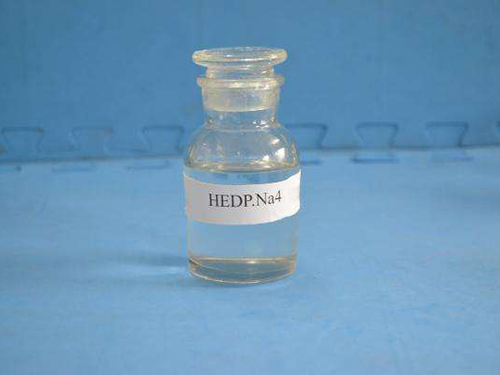Potential Applications and Effects of CL and Me Isothiazolinone in Various Industries
The Role of CL+ME Isothiazolinone in Modern Formulations
In recent years, the ever-increasing demand for effective and safe preservatives in various products has led to the development and adoption of a range of chemical compounds. Among these, CL+ME isothiazolinone has garnered significant attention in both the cosmetic and industrial sectors. This compound, characterized by its strong biocidal properties, has become a favored choice for formulation chemists seeking to enhance the shelf life and safety of their products.
What is CL+ME Isothiazolinone?
CL+ME isothiazolinone, also known as Kathon CG, is a mixture of methylisothiazolinone (MI) and chloromethylisothiazolinone (CMI). This combination offers a broad spectrum of antimicrobial activity, making it particularly effective against bacteria, fungi, and certain viruses. The compound works by disrupting microbial cell membranes and inhibiting essential cellular processes, which ultimately leads to cell death. Due to its potent nature, it is often used at low concentrations, ensuring that formulations remain effective while minimizing the risk of adverse reactions.
Applications in Cosmetic Products
In the cosmetic industry, CL+ME isothiazolinone is widely utilized in formulations such as creams, lotions, shampoos, and shower gels. The primary reason for its popularity is its ability to provide long-lasting protection against microbial contamination. Given that cosmetics often contain water, which is a breeding ground for bacteria and fungi, the inclusion of effective preservatives like CL+ME isothiazolinone is crucial.
However, the use of isothiazolinones in cosmetics has not been without controversy. Regulatory agencies in various countries have raised concerns about potential sensitization and allergic reactions associated with these compounds. As a result, manufacturers are increasingly aware of the need to balance efficacy with safety. This has led to the formulation of cosmetic products that are not only effective but also hypoallergenic, catering to consumers with sensitive skin.
Industrial Applications
cl+ me isothiazolinone

Beyond cosmetics, CL+ME isothiazolinone finds a place in industrial applications as well. It is commonly used in water-based formulations, such as paints, adhesives, and coatings. Its ability to inhibit microbial growth helps in preventing spoilage and maintaining the quality of these products during storage and use. Additionally, it is utilized in the preservation of textiles and leather products, further showcasing its versatility.
The integration of CL+ME isothiazolinone into industrial formulations also addresses the growing concerns regarding hygiene and microbial control in various sectors. Industries such as food processing, pharmaceuticals, and personal care are increasingly prioritizing the implementation of effective preservatives to ensure product integrity and safety.
Global Regulatory Landscape
As awareness of the potential risks associated with chemical preservatives rises, the regulatory landscape surrounding CL+ME isothiazolinone continues to evolve. In Europe, for example, the cosmetic regulation mandates that the concentration of MI and CMI combined must not exceed 0.0015% in leave-on products and 0.5% in rinse-off products. These regulations reflect a commitment to consumer safety while allowing for the continued use of effective preservatives.
In light of these regulations, formulation chemists are tasked with the challenge of developing products that not only comply with safety standards but also meet consumer expectations for performance. This has spurred innovation in the formulation of preservatives and preservation systems, including the exploration of natural alternatives and synergistic blends that can provide similar levels of efficacy without the associated risks.
The Future of CL+ME Isothiazolinone
Looking forward, the future of CL+ME isothiazolinone in formulations appears promising, yet cautious. As research continues to unfold regarding the safety and performance of isothiazolinones, manufacturers will need to stay ahead of regulatory changes and consumer preferences. The focus will likely shift toward finding a balance between effective preservation and the development of sensitization-free formulations.
In conclusion, while CL+ME isothiazolinone remains a cornerstone in the preservation of personal care and industrial products, the ongoing dialogue about safety and efficacy will shape its future use. The challenge for formulators will be to innovate while prioritizing consumer safety, ensuring that products not only perform well but also minimize any potential health risks. The journey of this compound reflects broader trends in the industry, underscoring the importance of responsible formulation practices in an ever-evolving marketplace.
-
lk-319-special-scale-and-corrosion-inhibitor-for-steel-plants-advanced-solutions-for-industrial-water-systemsNewsAug.22,2025
-
flocculant-water-treatment-essential-chemical-solutions-for-purification-processesNewsAug.22,2025
-
isothiazolinones-versatile-microbial-control-agents-for-industrial-and-consumer-applicationsNewsAug.22,2025
-
scale-inhibitor-key-solutions-for-water-system-scale-preventionNewsAug.22,2025
-
organophosphonates-versatile-scale-inhibitors-for-industrial-water-systemsNewsAug.22,2025
-
scale-and-corrosion-inhibitor-essential-chemical-solutions-for-water-system-maintenanceNewsAug.22,2025





